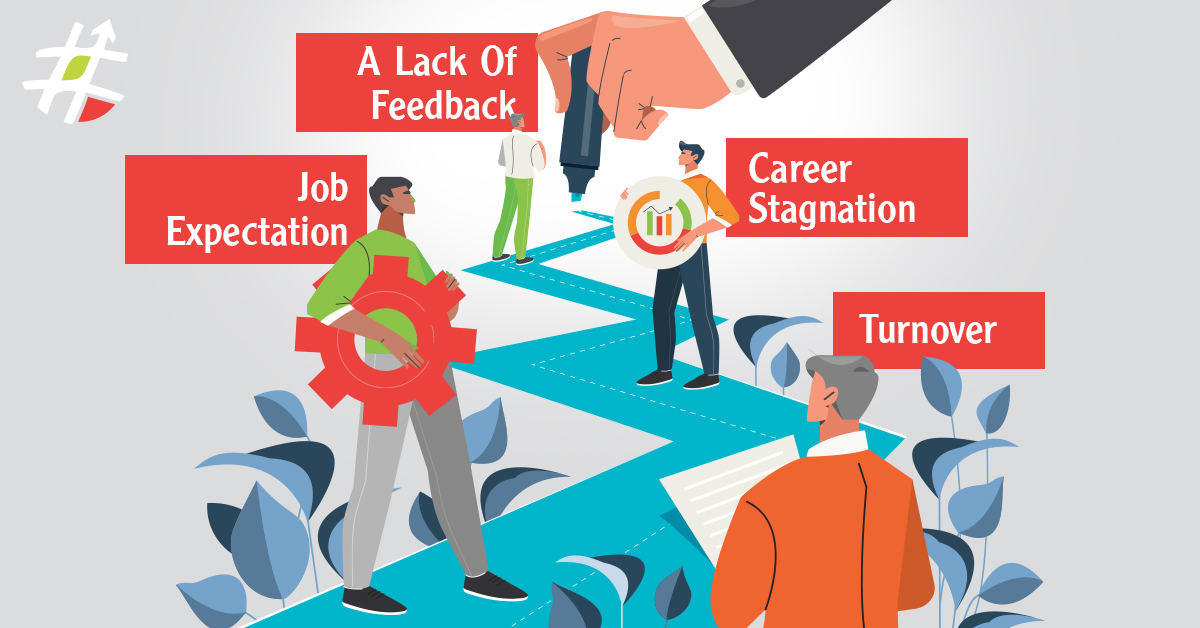Turnover is high. By some estimates, it’s double pre-pandemic levels. This is putting at significant risk the ambitions of procurement teams in 2023: increased adoption of digital solutions; strengthening strategic supplier relationships; further commitments to ESG initiatives.
Without an adequate workforce, nothing of significance will be achieved.
With many HR departments focused on recruiting new talent, an opportunity is being lost. If organisations want to win the war for talent, they have to focus on the worker they have: retention and upskilling. To stop the revolving door that has traditionally been a reality for procurement teams, we must first understand what is making employees shop around to a higher level than ever before (hint: it’s not necessarily pay).
Then, we need to work on making our culture more attractive.
Why is turnover so high?
- Career stagnation. A lack of opportunity for career growth and development can make employees feel stagnant and unfulfilled in their current roles, causing them to actively seek new opportunities elsewhere. Without opportunities for advancement, employees feel unvalued and underutilized, which can lead to decreased engagement and motivation. When this happens, you can kiss your top talent goodbye.
- A lack of feedback. A lack of feedback from managers can make employees feel like they’re in the dark about how they’re doing. Without regular check-ins and constructive criticism, it can be hard to know if you’re on the right track, and easy to feel like you’re just spinning your wheels.
- Job expectations. Procurement covers a lot of ground, and that ground is expanding. Management is increasingly looking to procurement for strategic solutions and input. It’s an exciting opportunity for any worker. But if their portfolio is devoid of any strategic potential, or they feel their voice isn’t being heard, then doubts set in. If the work doesn’t reflect what attracted them to the position in the first place, they’ll go.
- Turnover. Simply put, turnover begets turnover. With a constantly changing team and one that fluctuates in number and capability, more is left to fewer. Stress increases, output drops, there’s more overtime and there’s less progress. Once it starts, high turnover is difficult to curtail.
Why you should focus on retaining talent instead of hiring
In 2020, it cost $10,000 to replace a supply chain worker. In 2022, that figure rose to $19,000. Alongside that is the cost of a bad hire, which sits somewhere between 30% – 150% of the position’s annual salary. In other words, it’s expensive to bring in new talent, prodigiously expensive if that talent isn’t up to the task, and – to cap it off – the strike rate of traditional hiring practices is poor.
The answer to winning the war for talent in procurement is looking within. McKinsey argues that “developing existing talent is among the most crucial investments organisations should make amidst talent scarcity and the high cost of external hires”.
Why? Because it leads to greater productivity and increased employee satisfaction and, therefore, retention. Here’s how to achieve it.
4 steps to retain your top talent
- Determine a capability baseline. Procurement has many facets and involves many skills. The first step involves determining your current skill baseline so you know what to target. Skills Gap Analysis can show you precisely where your team sits, both at an individual and group level, across every facet of the procurement skillset.
- Invest in structured and continual upskilling. Create the workers you need. With sophisticated procurement education platforms like Academy of Procurement, you can target the specific areas in which your team needs greater capability. You can also target the employees best suited to particular roles, giving you a greater chance of success.
- Improve communication. Workers need to feel empowered, need to feel like their voices are being heard. Communication has to be improved along all lines – between the C-Suite and contract managers, between supply leaders and front line workers. Businesses need to create an environment in which issues can be raised and heard and everyone feels like their voice counts. This matters more than a pay rise.
- Digital Infrastructure. Businesses need to invest in advanced software that allows procurement officers to do their jobs at the required level. Improve morale by taking mundane, repetitive tasks out of human hands and into more reliable digital hands. Let the human workers focus on what they’re good at – strategy and innovation.
Retrain, not replace
To win the war for talent, businesses must focus on what they already have and how they can improve it. The cost of hiring is spiralling and the cost of a bad hire is prodigious. It’s far more cost effective to train the workforce you have so you get the workers you need.
Skills Gap Analysis will map your team’s capability down to the individual. Know where your strengths are and your weaknesses, and then use Academy of Procurement’s industry-leading learning platform to strengthen your performance.








